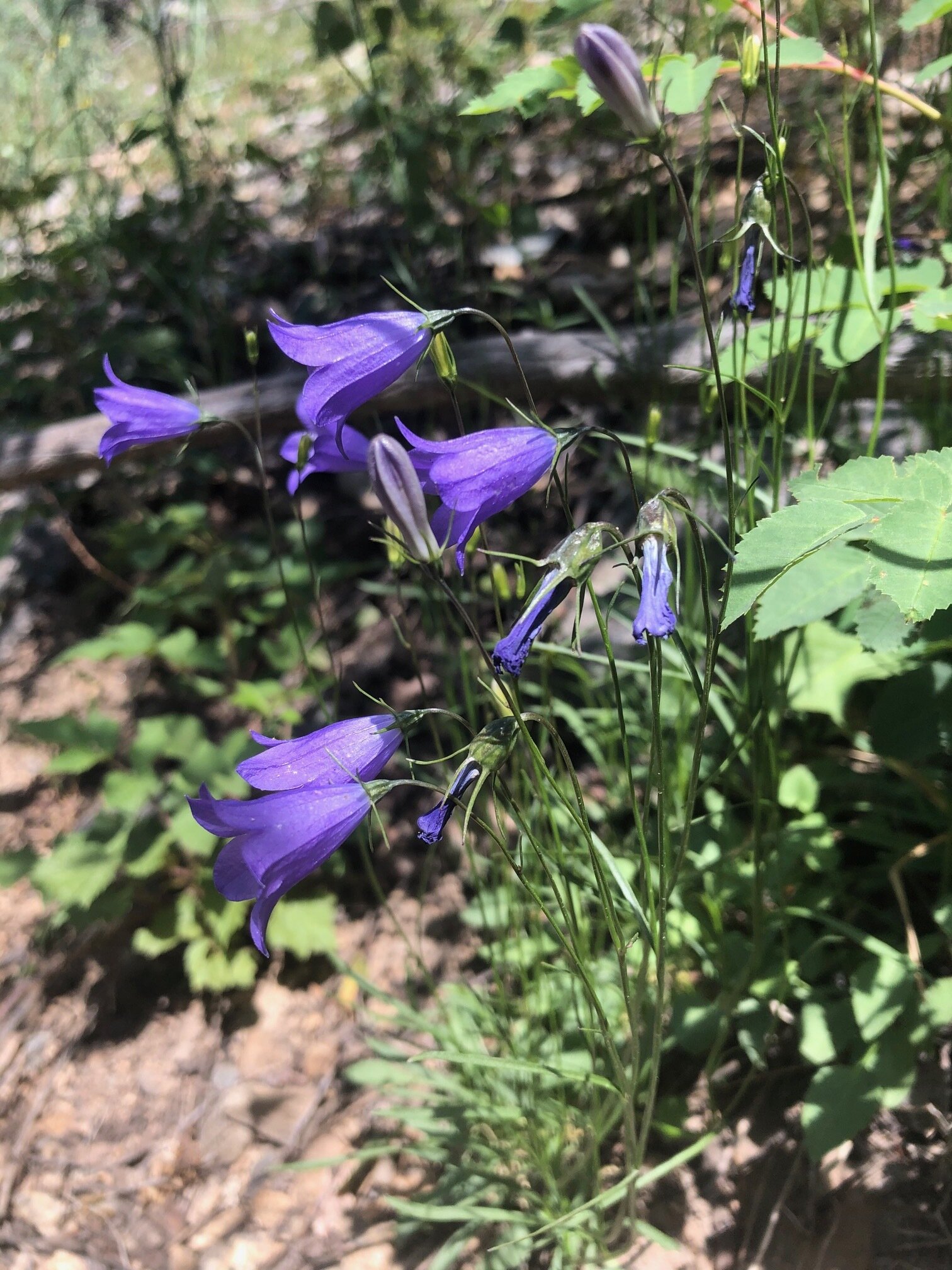Rubus idaeus, July 9, 2020
R. idaeus in fruit, August 4, 2020
Common & scientific name
American red raspberry, Rubus idaeus
Family
Rose, Rosaceae
Location
Roadside near Lincoln Creek turnoff, 9,500’
Fun, weird, helpful, or little known fact
The best place to find our delicious wild raspberries, which will bear fruit in August, is in disturbed places like roadside and below Shimer Peak (above Weller Lake), which burned in 1980.
According to a US Forest Service study, "American red raspberry allocates most of its energy to vegetative regeneration [as opposed to flowering and seed production] on recently disturbed sites with favorable growing conditions. With time, initially elevated nutrient levels decline, and shading increases. As growing conditions deteriorate, American red raspberry shifts its reproductive effort to the production of large numbers of seed.”
In other words, raspberry-eating time!


































